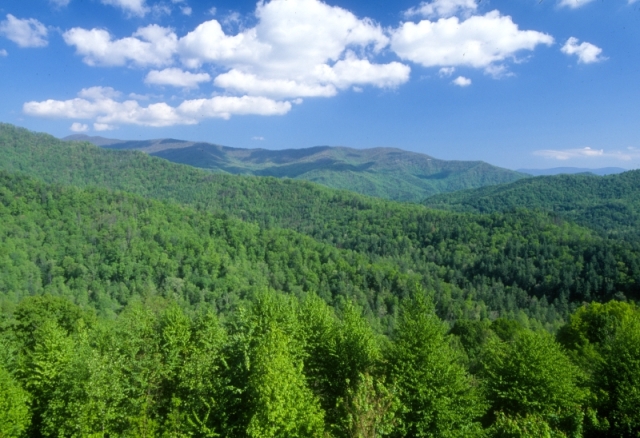On March 27, five environmental conservation advocacy groups sued the U.S. Forest Service to challenge its updated management plans for Nantahala and Pisgah National Forests in Western North Carolina.
The federal lawsuit, filed in the Western District of North Carolina by the Southern Environmental Law Center, Center for Biological Diversity, Defenders of Wildlife, MountainTrue and Sierra Club, argued that the Forest Service’s goal of increasing logging fivefold and tree thinning levels tenfold in Nantahala and Pisgah will endanger these forests’ old-growth tree stands, rare species habitats and overall character.
Nantahala and Pisgah National Forests are the two largest national forests in North Carolina. According to the most recent U.S. Forest Service estimates, the forests host upwards of seven million visitors each year. They cover one million acres, including significant amounts of untouched wilderness in addition to extensive recreational areas and zones opened for commercial activities like logging. In 2022, 4,940 North Carolinians worked in the logging industry, adding $302 million to the Gross State Product.
The U.S. Forest Service, an agency of the Department of Agriculture, published its revised management plans for Nantahala and Pisgah in February 2023. In a concurrently published press release, the Forest Service said that it consulted with stakeholder groups, including local governments, tribal nations and individual community members, to develop its strategies. They specifically noted the new “co-steward[ing]” role of the Eastern Band of Cherokee Indians, whose national territory, the Qualla Boundary Land Trust, is adjacent to Nantahala.
The Forest Service defended its plans in the same press release, describing the revisions as a “science-based approach” that will improve “forest resilience” by strategically thinning forest areas to diversify tree ages.
The conservation coalition has vehemently rejected these claims, arguing that the suggested logging strategy is too aggressive when considering the environmental devastation that Hurricane Helene wreaked on Nantahala and Pisgah in September 2024. According to the advocacy groups, the Forest Service did not appropriately update its management plan to account for the 117,000 acres damaged by Helene’s floods and fires. They also contend that the Forest Service ignored the input of advocacy organizations and did not adequately inform the public of the plan’s environmental drawbacks.
“The most popular and biodiverse national forest in the country should not be targeted for massive increases in clear cuts, especially after Helene,” Will Harlan, the Southeast director at the Center for Biological Diversity, said in a press release from the Southern Environmental Law Center. “The hurricane did plenty of logging. We don’t need five times more.”
Several of the environmental groups noted in their press statements that they felt increased urgency to protest the U.S. Forest Service plan, as the federal government has recently rolled back protections for National Forests.
In a March 1 executive order titled “Immediate Expansion of American Timber Production,” President Donald Trump opened up substantial portions of National Forests, including Nantahala and Pisgah, for accelerated logging operations. These timber campaigns will bypass typical procedures intended to bring environmental concerns to the forefront.
“Our inability to fully exploit our domestic timber supply has impeded the creation of jobs and prosperity, contributed to wildfire disasters, degraded fish and wildlife habitats, increased the cost of construction and energy and threatened our economic security,” the executive order says. “It is vital that we reverse these policies and increase domestic timber production to protect our national and economic security.”
“Trump’s order will unleash the chainsaws and bulldozers on our beautiful, irreplaceable federal forests,” Randi Spivak, public lands policy director at the Center for Biological Diversity, countered in a press release. “Clear cutting these amazing national treasures will increase fire risk, drive imperiled wildlife to extinction, pollute our rivers and streams and destroy world-class recreation sites.”









